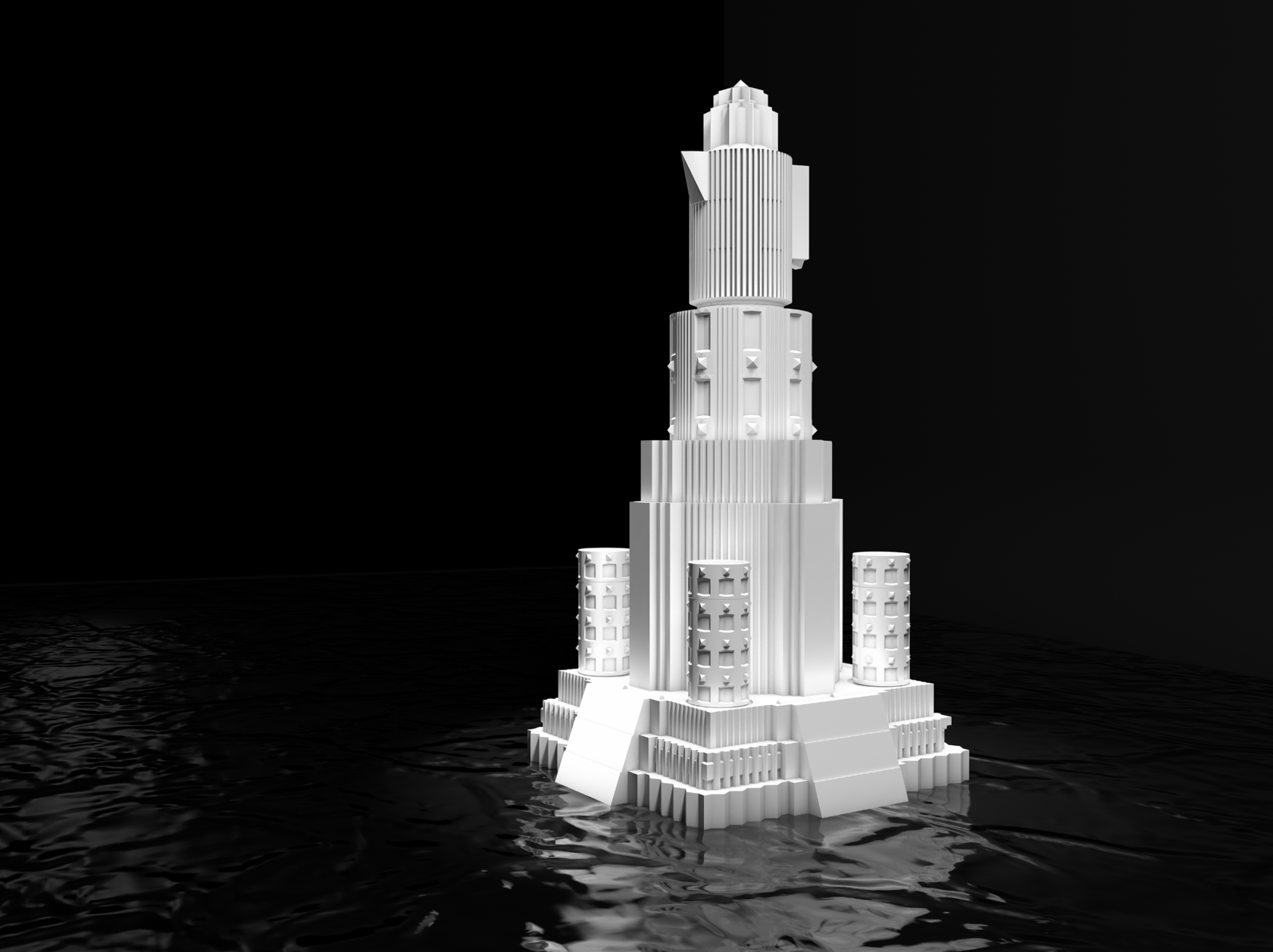
Ministry of Tea
The Empire Project
2022
2022
The architecture of the great pyramidal temples is a silent mathematics.
Oswald Spengler "The Decline of the West", 1918
i
winner of the nomination "Industrial Design. Tableware" of the Contest-Biennale "Designed and Made in Russia" 2022
The Empire project is a study devoted to understanding the role of the so-called "paper architecture" in the broad context of the 16th-21st centuries. "Paper architecture" is a term used in Soviet architectural studies to denote fantastic projects that influenced the further development of architecture. Despite the time of the term's origin and the basis on which it was developed, it can be applied to past eras and examples can be found there. In the author's study, "paper architecture" refers to theoretical and artistic practices of different historical and cultural periods in which the image of utopian design was realized.
It was important to trace the path of the conceptual transition from a flat design-fantasy paper space to a three-dimensional dense world of ceramic plastics, where the use of a multidisciplinary approach to creating original works from ceramics is not only a prototyping of possible future architectural solutions, but carries a very specific functional load.
In designing the tea set "The Ministry of Tea", the author explores the history of the place associated with his childhood and youth. Childhood memories and knowledge acquired with age help to assemble a complete image of the work. As a schoolboy and attending weekly swimming lessons at the "Moscow" pool, it is difficult to imagine the scale of the metamorphoses that took place there. Having first blown up the "Cathedral of Christ the Savior", the main temple of Russia, for the sake of laying the foundation of the "paper" colossus of the Soviet era - the "Palace of Soviets", crowned with a huge statue of Lenin, the post-war government decides to bury the fantastic project of the Palace, and in the giant pit to build a swimming pool of amazing size and perfected engineering thought. There was no such structure in the capital before, nothing like it now, as, incidentally, is the pool itself. History is cyclical, because this is the principle of the universe - rotation, and therefore continuous polarity and duality, in which repetitions are inevitable. The leadership of the new country dismantles the pool and returns the temple to its original place, almost in its original form.
The imperial image of the Ministries and Palaces remains in the popular consciousness of the new Russia. And an integral part of ministerial life is the image of "Kremlin feasts" and the familiar glass in the cup holder. Tea traditions in Russia have undergone various transformations over the past hundred years. Tea drinking here was "unceremonious", and "empty" tea was categorically not welcomed. The table was set with a large amount of food.
The architectural project of the "Ministry of Tea" is transposed from the "paper" plane into three-dimensional space, acquires volumes, and, while still remaining in the original design channel of "paper architecture", receives alternative functional capabilities. Visually, the service is a synthesized image of imperial symbols and traditions of different years, cast in porcelain. This is a fusion of the eras of Babylon, Mesopotamia, the Russian Empire, the Soviet Union and New Russia, images of the five-domed Cathedral of Christ the Savior, ziggurats, the Palace of Soviets, the Moscow swimming pool and a unique ceremony of the local tea tradition.
It was important to trace the path of the conceptual transition from a flat design-fantasy paper space to a three-dimensional dense world of ceramic plastics, where the use of a multidisciplinary approach to creating original works from ceramics is not only a prototyping of possible future architectural solutions, but carries a very specific functional load.
In designing the tea set "The Ministry of Tea", the author explores the history of the place associated with his childhood and youth. Childhood memories and knowledge acquired with age help to assemble a complete image of the work. As a schoolboy and attending weekly swimming lessons at the "Moscow" pool, it is difficult to imagine the scale of the metamorphoses that took place there. Having first blown up the "Cathedral of Christ the Savior", the main temple of Russia, for the sake of laying the foundation of the "paper" colossus of the Soviet era - the "Palace of Soviets", crowned with a huge statue of Lenin, the post-war government decides to bury the fantastic project of the Palace, and in the giant pit to build a swimming pool of amazing size and perfected engineering thought. There was no such structure in the capital before, nothing like it now, as, incidentally, is the pool itself. History is cyclical, because this is the principle of the universe - rotation, and therefore continuous polarity and duality, in which repetitions are inevitable. The leadership of the new country dismantles the pool and returns the temple to its original place, almost in its original form.
The imperial image of the Ministries and Palaces remains in the popular consciousness of the new Russia. And an integral part of ministerial life is the image of "Kremlin feasts" and the familiar glass in the cup holder. Tea traditions in Russia have undergone various transformations over the past hundred years. Tea drinking here was "unceremonious", and "empty" tea was categorically not welcomed. The table was set with a large amount of food.
The architectural project of the "Ministry of Tea" is transposed from the "paper" plane into three-dimensional space, acquires volumes, and, while still remaining in the original design channel of "paper architecture", receives alternative functional capabilities. Visually, the service is a synthesized image of imperial symbols and traditions of different years, cast in porcelain. This is a fusion of the eras of Babylon, Mesopotamia, the Russian Empire, the Soviet Union and New Russia, images of the five-domed Cathedral of Christ the Savior, ziggurats, the Palace of Soviets, the Moscow swimming pool and a unique ceremony of the local tea tradition.




